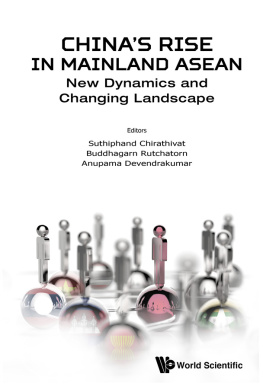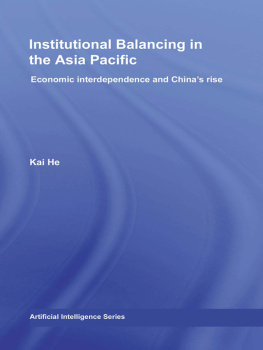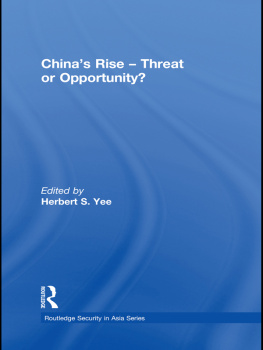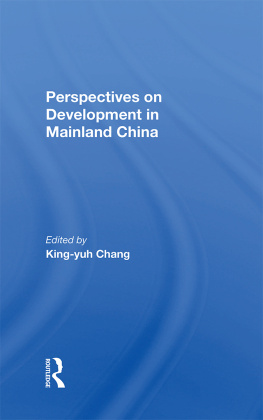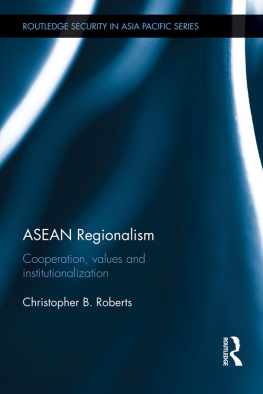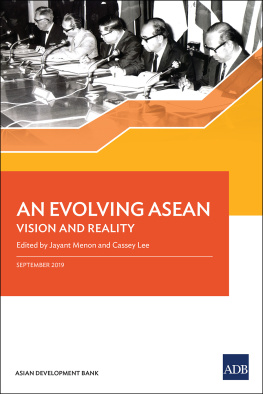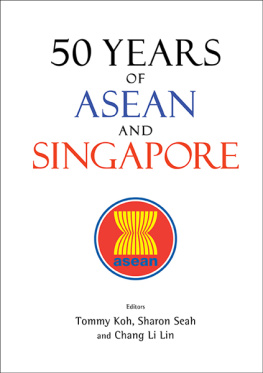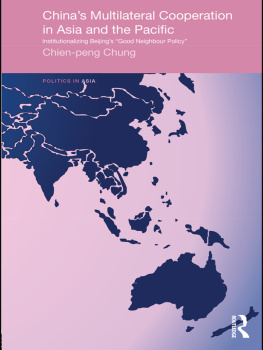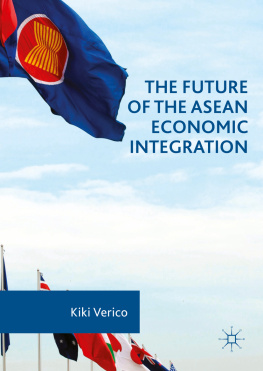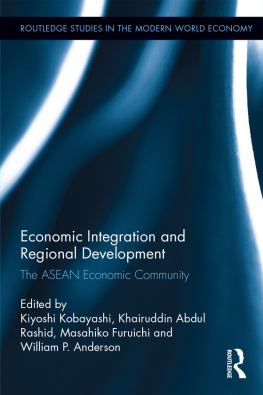Published by
World Scientific Publishing Co. Pte. Ltd.
5 Toh Tuck Link, Singapore 596224
USA office: 27 Warren Street, Suite 401-402, Hackensack, NJ 07601
UK office: 57 Shelton Street, Covent Garden, London WC2H 9HE
British Library Cataloguing-in-Publication Data
A catalogue record for this book is available from the British Library.
CHINAS RISE IN MAINLAND ASEAN
New Dynamics and Changing Landscape
Copyright 2019 by Authors of individual chapters
All rights reserved.
ISBN 978-981-3275-40-9
For any available supplementary material, please visit https://www.worldscientific.com/worldscibooks/10.1142/11133#t=suppl
Desk Editor: Karimah Samsudin
Typeset by Stallion Press
Email:
Printed in Singapore
CHAPTER
INTRODUCTION
SUTHIPHAND CHIRATHIVAT AND ANUPAMA DEVENDRAKUMAR
I. Rationale
In the last two decades China has successfully established itself as a powerful regional and global power, surpassing Japan, in 2010, as the second largest economy of the world and has become a major player in the affairs of Southeast Asian nations. This rise of China, ASEANs giant neighbor, and in its wake the significant economic, political, and sociocultural developments in the ASEAN region, has called for a closer examination of this development. The rationale for this volume on Chinas Rise in Mainland ASEAN: New Dynamics and Changing Landscapes purports to meet this need.
At the same time, while Chinas spectacular growth makes it vulnerable in terms of expanding its global dependence, it also makes its neighbours equally vulnerable due to their growing dependence on China. All of these developments have led China through its evolving foreign policy to exert considerable influence on its immediate ASEAN neighbours in many complex ways. While the ChinaASEAN bilateral relations are soaring, there are growing concerns among ASEAN member countries about the nature of Chinas engagement with ASEAN. In this context, this book focuses on Chinas influence on mainland ASEAN countries: Cambodia, Lao PDR, Myanmar, Thailand, and Vietnam.
Chinas influence on Southeast Asia is not new. The Southeast Asian countries share rich historical links, sociocultural ties, and political-economic dynamics with China since ancient times. The period after Maos death coincided with Chinas opening up to the world through initiation of outward-looking policies under the leadership of Deng Xiaoping. China, since then, has also undergone significant domestic changes that have influenced her ways and means of engaging the region and the world. Having China as a neighbour, with the three mainland ASEAN countries Myanmar, Lao PDR, and Vietnam, sharing borders with China, how ASEAN is coping with Chinas rise has been a matter of interest for countries outside ASEAN. The question has become more relevant, particularly in the last two decades that have witnessed a remarkable evolution and growth in Chinas regional and global foreign policy.
Although Chinas bilateral relationships with some of the ASEAN countries were established much earlier, formal ASEANChina dialogue relations began in early 1990s. China became a full dialogue partner of ASEAN in 1996. Relations between China and ASEAN countries deepened substantially since 1997, when China ensured stability in the Southeast Asian region during the Asian financial crisis, by volunteering to refrain from devaluing its currency.
By the turn of the century, in December 2001, China acceded to the World Trade Organization (WTO). Soon after, China proposed an ASEANChina Free Trade Agreement. At that time, the former ASEAN Secretary-General, Mr. Rodolfo Certeza Severino Jr., who coordinated the deal, stated if ASEAN cannot compete with China, it should join China. It was realistic to accept the proposal as China was leaping to strengthen its relations with the region. From that point on, the realisation grew in ASEAN that China is not only a rising political superpower as observed by outsiders and the western world, but also a distinctly emerging economic superpower of the region and the world. The ASEANChina Free Trade Agreement (FTA) eventually came into effect in July 2005. The consequence of Chinas spectacular growth was already discernible in mainland ASEAN.
However, Chinas ambitious plans to pursue its strategic interests was also causing serious concerns and were troubling ASEAN nations. These concerns and anxieties as well as differences within ASEAN over their perceptions of Chinas role in the region were reflected in the fact that in 2012, the ASEAN Summit in Cambodia, for the first time in 45 years, failed to issue a joint statement. ASEAN was divided in its views over the South China Sea dispute and the interference of China. Since then, ASEAN has been experiencing a new kind of emerging Chinese geopolitical and economic sphere in the mainland Southeast Asia, for instance, the Mekong Region, where land, river, natural resources, and the people are becoming part of Chinas grand strategy. These alarming developments encourage as well as necessitate us to equip ourselves with a better understanding, awareness, and knowledge.
II. Deepening ASEANChina Economic Ties
China is now ASEANs No. 1 overall trading partner, followed by Japan, the EU, and the USA. ASEANChina dialogue partnership has now passed over a quarter of a century of ties, while the bilateral relations within countries in ASEAN and China have continued to grow. This makes ASEANChina relations not only of academic interest but a partnership that creates much debate as well in the regional context.
Trade: Chinas total trade value with ASEAN was US$367 billion in 2016.
According to the World Investment Report 2017, with reference to FDI stock in the group of Least Developed Countries (LDCs), three ASEAN LDCs Lao PDR, Myanmar, and Cambodia remained the largest single recipients of Chinese investment. of which Thailand alone received more than eight million.
Further, in 2013, President Xi Jinpings One Belt One Road (OBOR), now called Belt and Road Initiative (BRI), was initiated. China, through this initiative, aims to strengthen its strategic and economic connections with all the countries that have come into contact with China, including ASEAN. While, as we have discussed above, trade and FDI growth reflect Chinas growing influence in mainland ASEAN, controversies around Chinas expanding strategic interests and the implications of these expanding interests have been a subject of increasing interest in the media in recent years. To name a few, they include the controversial ThaiChina railway project, the LaosChina railway project, the dredging of the Mekong River which is expected to benefit the economy but at the expense of ecosystems across the river, among others.


